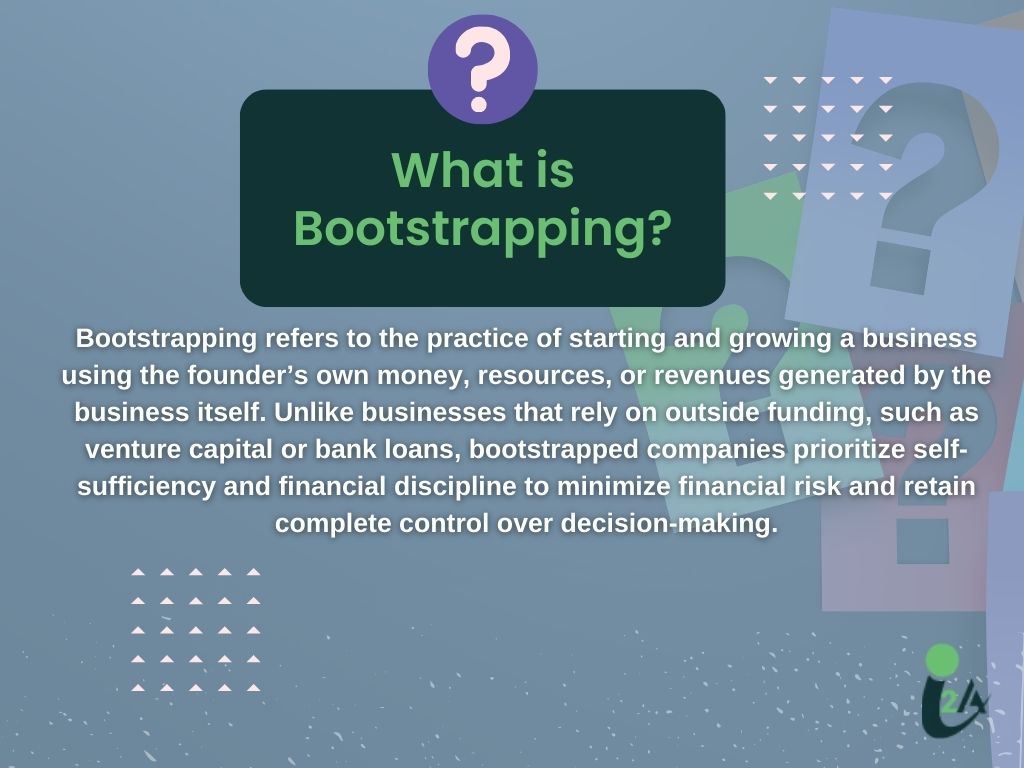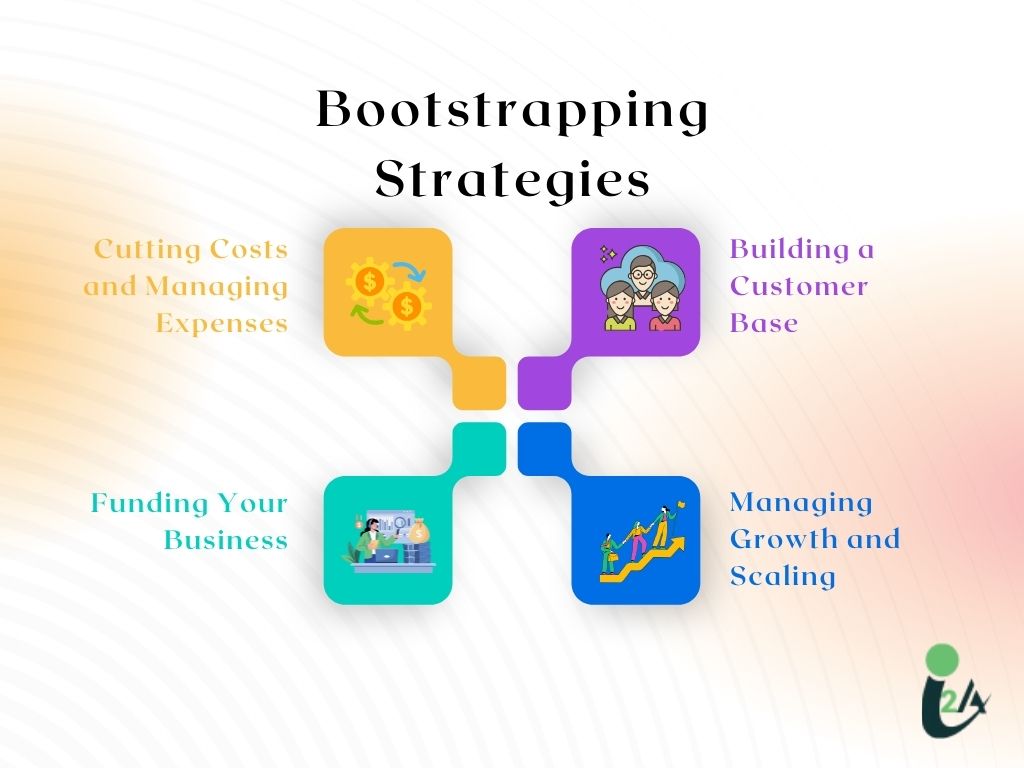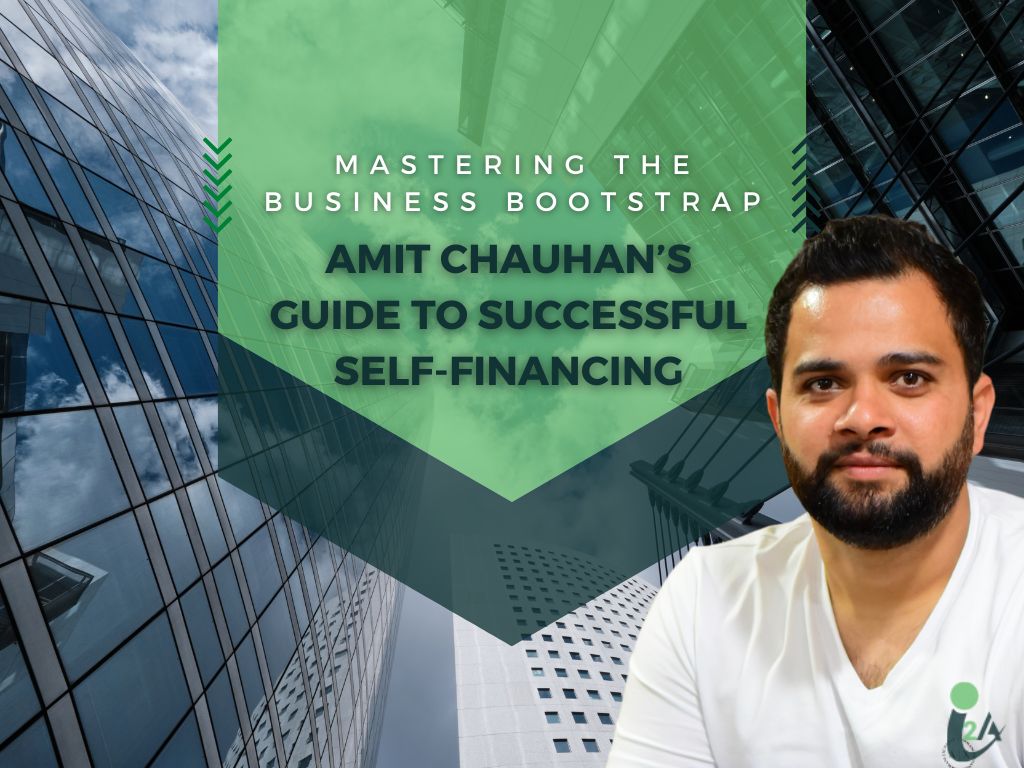Amit Chauhan’s Philosophy on Bootstrapping
Amit Chauhan’s Philosophy on Bootstrapping
Amit Chauhan, the Founder and CEO of I2A Technologies, is a serial entrepreneur who epitomizes the essence of bootstrapping.
For Amit, bootstrapping isn’t just a funding strategy—it’s a disciplined approach to building sustainable businesses. “To bootstrap your startup is to embrace self-reliance,” he often says, “leveraging only existing resources while focusing on creating value.” His journey highlights how financial independence and innovative thinking can fuel success across industries like travel, finance, and digital marketing.
Most bootstrapped companies begin with the founder’s personal savings, and Amit’s story is no different. He started I2A Technologies with his own resources, building his minimum viable product without traditional bank loans or venture capital.
In the early days, he also relied on friends and family for small contributions to keep operations running. This self-fund approach allowed him to retain complete control over his business while maintaining the flexibility to pivot and innovate.
Amit’s philosophy centers on minimizing expenses and reinvesting profits back into the business. He believes that bootstrapping not only fosters financial discipline but also encourages a lean mindset essential for solving complex problems. By avoiding reliance on external funding, Amit built I2A Technologies into a multi-vertical powerhouse, all while focusing on customer-centric solutions.
“Bootstrapping is about working smarter, not harder,” Amit emphasizes. It allows entrepreneurs to grow their businesses organically, free from the pressures of external investors. Bootstrapped companies can remain nimble, prioritizing customer needs over investor demands—a lesson Amit has applied to all his ventures.
Through his success, Amit Chauhan has positioned himself as a thought leader in bootstrapping, demonstrating its power to create resilient, innovative businesses. His journey inspires entrepreneurs to rely on their resourcefulness, prove their business model with minimal risk, and avoid the pitfalls of over-leveraging through venture capital or bank loans. For Amit Chauhan, bootstrapping isn’t just a funding strategy—it’s a way of life.
What is Bootstrapping?

Bootstrapping refers to the practice of starting and growing a business using the founder’s own money, resources, or revenues generated by the business itself. Unlike businesses that rely on outside funding, such as venture capital or bank loans, bootstrapped companies prioritize self-sufficiency and financial discipline to minimize financial risk and retain complete control over decision-making.
Bootstrapping tools and techniques include leveraging personal savings, reinvesting profits, managing cash flow effectively, and adopting a lean approach to operations. Some self-funded businesses also rely on creative strategies, such as pre-selling products, forming partnerships, or utilizing low-cost digital tools to cut overhead expenses. These methods help entrepreneurs stretch their resources while focusing on growth and sustainability.
For Amit Chauhan, the Founder and CEO of I2A Technologies, bootstrapping is not just a funding strategy but the foundation of self-funded businesses that thrive on resourcefulness and independence. By starting his ventures without outside funding, Amit built a multi-vertical business empire while navigating the challenges of cash flow management and financial risk. His journey underscores the power of bootstrapping as a mindset that fosters resilience, innovation, and long-term success.
Validating Your Business Idea: A Precursor for a Bootstrapped Company
Validation is the cornerstone of any successful bootstrapped company. Before investing your own resources, it’s essential to ensure that your business idea solves a real problem and has a viable market. For self-funded ventures, this process minimizes financial risk and maximizes the chances of sustainable growth. Bootstrapping requires a lean approach, making validation even more critical in the early stages.
One of the most effective methods for validation is developing a minimum viable product (MVP). This low-cost version of your product or service allows you to test your idea in the market, gather feedback from potential customers, and refine the offering based on real-world data. Amit Chauhan emphasizes the importance of launching with an MVP, citing it as the starting point for many businesses that later scaled successfully through bootstrapping.
Understanding your target market is another key aspect of validation. Conducting surveys, hosting focus groups, or even speaking directly to potential customers can help identify pain points and unmet needs. Amit shares how, in the early stages of I2A Technologies, he leveraged his network to gain insights into market opportunities and adapted his offerings to address specific industry challenges. This customer-centric approach is a hallmark of successful self-funded businesses.
A well-researched business plan is essential to guide the validation process. It doesn’t need to be elaborate but should outline market opportunities, projected cash flow, and a strategy for scaling. Amit often advises entrepreneurs to keep plans flexible, allowing room for iteration based on feedback and market shifts. “A plan is a roadmap, not a rigid rulebook,” he notes, stressing the importance of adaptability in bootstrapping.
For self-funded ventures, validation isn’t a one-time activity—it’s an ongoing process. Bootstrapped companies must continuously evaluate their ideas, aligning them with customer needs and market trends. Amit Chauhan credits this iterative approach for helping I2A Technologies succeed across multiple industries, turning initial concepts into thriving, scalable businesses.
Bootstrapping Your Startup
Bootstrapping your startup offers unparalleled advantages, especially for small business owners who want to maintain complete control over their vision. By self-funding, entrepreneurs avoid the equity dilution and external pressures that come with venture capital firms. Bootstrapped companies often focus on sustainable business growth, relying on profitability rather than outside money to drive success. This independence fosters innovation and allows founders to build businesses on their terms.
For Amit Chauhan, Founder and CEO of I2A Technologies, bootstrapping was not just a funding choice—it was the foundation of his entrepreneurial journey. Starting with his own money, Amit built I2A into a multi-vertical enterprise spanning travel, finance, and digital marketing. His approach exemplifies how self funding can enable entrepreneurs to align their strategies with their passions, without compromising on ownership or direction.
Resourcefulness is at the heart of bootstrapping. Building a lean business model, conducting solid market research, testing products, and gathering customer feedback are critical for success. Small business owners who prioritize these practices save money while creating value-driven offerings. Amit often highlights the importance of planning ahead, stating that “a business thrives when you use your resources wisely and focus on what matters most—delighting your customers.”
Financial planning is non-negotiable for a self-funded startup. Entrepreneurs need a clear business plan and a firm grip on personal finances. Balancing personal debt with calculated business investments was a skill Amit perfected during his early days. He stresses that bootstrapping requires sacrifices but believes these sacrifices are the foundation of meaningful growth. “Every rupee saved or invested wisely gets you closer to building your own business on your own terms,” Amit advises, emphasizing resilience and discipline as key traits for bootstrapped founders.
Key Traits of Successful Bootstrapped Entrepreneurs
Successful bootstrapped entrepreneurs share a unique blend of traits that enable them to build thriving businesses with limited capital. Amit Chauhan, the Founder and CEO of I2A Technologies, embodies these qualities, having built his multi-vertical enterprise entirely by pulling oneself up by one’s bootstraps. His journey offers valuable lessons for anyone navigating the challenges of bootstrapped startups.
One defining trait is resourcefulness. Bootstrapped entrepreneurs know how to stretch every rupee, finding creative solutions to maximize returns. Amit credits his ability to make the most of limited money during the early days of I2A. “Every expense needs to be purposeful,” he shares. By focusing on essentials and reinvesting early profits, he ensured steady growth without relying on external capital or investors.
Another essential quality is the ability to withstand external pressure. Bootstrapping often means facing skepticism from those who believe external funding is the only path to success. Amit emphasizes resilience: “Bootstrapping is about believing in your vision and pulling oneself forward even when the world tells you otherwise.” Staying committed to his goals, he focused on building a sustainable foundation, relying on a dedicated team rather than outside validation.
Discipline and sacrifice also play a critical role. Many bootstrapped entrepreneurs balance their ventures alongside a day job during the early stages to save money and reduce risk. Amit’s journey reflects this balancing act. Before dedicating himself fully to I2A, he carefully planned and managed finances to fund operations without overextending. He believes this discipline is what separates successful bootstrapped startups from those that falter under pressure.
Lastly, leadership and collaboration are crucial. Building a bootstrapped company requires more than individual effort—it demands a dedicated team aligned with the founder’s vision. Amit highlights how a team’s shared passion and commitment can drive success, even when resources are tight. “With the right people beside you, it’s easier to overcome hurdles and focus on long-term goals,” he notes.
For bootstrapped entrepreneurs like Amit Chauhan, success is less about external funding and more about pulling oneself up with determination, discipline, and vision. These traits not only help navigate the challenges of limited capital but also create businesses that are resilient, efficient, and purpose-driven.
Amit Chauhan’s Bootstrapping Strategies

Cutting Costs and Managing Expenses
Amit Chauhan believes in the mantra of operating lean. To minimize costs, he outsourced non-core tasks, ensuring that I2A Technologies focused its resources on strategic priorities. Leveraging free tools for marketing and project management further reduced overheads while maintaining operational efficiency. “Bootstrapping teaches you to differentiate between essential and optional expenses,” Amit shares, emphasizing how careful cost management allowed his ventures to stay financially sustainable during their early stages.
Building a Customer Base
For Amit, building a loyal customer base was pivotal to I2A’s success. He focused on targeted marketing, creating effective sales funnels, and delivering exceptional customer service across travel, finance, and digital marketing. By prioritizing customer relationships, he turned satisfied clients into advocates, generating steady revenue streams. “Your customers are your best investors,” he states, highlighting the importance of consistent value delivery and customer trust in bootstrapped startups.
Funding Your Business
Amit relied on practical funding strategies like personal savings, credit cards, and small loans to get I2A Technologies off the ground. Rather than seeking external funding, he reinvested early profits back into the business, creating a self-sustaining growth cycle. “Bootstrapping isn’t about the money you start with but how wisely you manage and multiply it,” he explains, reflecting on how this approach helped I2A expand organically across its verticals.
Managing Growth and Scaling
As I2A grew, Amit prioritized scalability and efficient resource allocation. He invested in team building and infrastructure that supported long-term goals without overextending resources. By focusing on measured growth and avoiding unnecessary risks, Amit ensured I2A maintained its financial stability while scaling. “Growth should be strategic, not impulsive,” he advises, stressing the importance of balancing ambition with sustainability.
Bootstrapping Myths Debunked
Despite its success stories, bootstrapping is often misunderstood. One common myth is that “bootstrapping limits growth.” This couldn’t be further from the truth. Amit Chauhan, Founder and CEO of I2A Technologies, shares, “Growth doesn’t depend on external funding—it depends on how creatively you manage your resources.” By reinvesting profits strategically and focusing on customer-centric solutions, Amit scaled I2A’s travel, finance, and digital marketing verticals without the need for external funding.
Another widespread misconception is that “you need large savings to bootstrap a business.” Amit’s journey proves otherwise. “I started with limited funds but maximized what I had by prioritizing a minimum viable product and testing it in the market,” he explains. By focusing on building revenue streams early and minimizing unnecessary expenses, he created a self-sustaining model.
Amit Chauhan’s Key Takeaways on Bootstrapping a Company
Amit Chauhan, Founder and CEO of I2A Technologies, believes that bootstrapping a company requires resilience, discipline, and an unwavering focus on creating value. One of his key takeaways is to always prioritize financial discipline. “Managing your cash flow effectively and reinvesting profits is crucial,” Amit shares, emphasizing the importance of maintaining a lean operation to conserve resources during the early stages.
He also highlights the significance of market validation before investing heavily. Testing a minimum viable product and gathering customer feedback helps entrepreneurs refine their offerings without wasting resources. Amit’s journey with I2A taught him that understanding your target market is as essential as building the product itself.
Another critical takeaway is the value of perseverance. Bootstrapping means navigating challenges without external safety nets. “When you own every decision and every dollar, it pushes you to innovate and stay committed to your vision,” he advises. Amit’s approach showcases the power of self-reliance in building lasting businesses.


 Publisher
Publisher 


